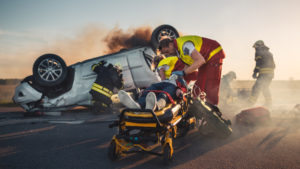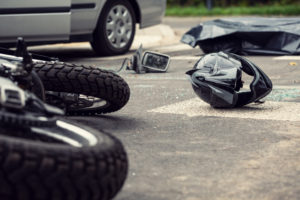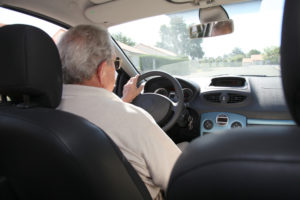
Personal injury cases are complex. Whether you were injured in a trucking, motorcycle, bicycling, or auto accident, or by a defective product, or at work, the long-term impact of these accidents can be life-changing.
An experienced personal injury attorney uses proven courtroom strategies to get the compensation their clients deserve and are legally entitled to receive. An important component of Virginia personal injury cases involves using medical illustrations for complicated topics and testimony. They are crucial in ensuring the jury understands the plaintiff’s physical injuries, their suffering, the struggles they are facing or will face in the future, and how it has affected their life and family.
While eyewitness accounts and evidence are key factors that influence the jury’s decision, how the intricate aspects of a case are presented can significantly affect the verdict and jury award. Medical illustrations and aids can show:
- How you were injured
- Resulting injuries
- Surgeries performed and others that may be needed
- What the injuries or hardware a party now lives with
- Future complications and risks
The average juror usually does not have the education or training to understand expert medical testimony. Yet, these medical experts are important witnesses because they help prove the seriousness and depth of an injury. When done right, medical illustrations are powerful in personal injury cases, and, if done correctly, can be admitted into evidence. Since humans are visual learners, the use of medical illustrations helps jurors understand what is presented and recall details when it is time for deliberations.
While medical imaging like X-rays can depict the damages in a personal injury claim, medical illustrations are much easier to understand and allow a jury to appreciate the severity of the injuries. Medical illustrations are simplified accurate visuals of otherwise complicated or confusing images that highlight the physical injuries for the jury. This could be done through the use of animation that shows how a part of the body now functions due to an injury by comparing close-ups of what a healthy person’s scan is versus the injured plaintiff and more.
Videos, drawings, 3D models, pictures, and animations, are all types of medical illustrations. The use of these aids ensures the testimony of medical experts is not just comprised of complex medical terminology and procedures that jurors will forget or find confusing. Instead of trying to remember the language, jurors remember what the injuries and surgeries looked like. Juries can remember the extent of the damages visually.
For example, we recently had a case where our client suffered an undisputed fractured radius from a severe car crash. The issue that was before the jury was whether that fracture caused a tear in the client’s Scaphoid-Lunate ligament, which created a permanent injury. We presented the medical illustration below to the jury:

Our medical expert explained that the fracture caused the tear, and the defendant’s expert testified that the tear was preexisting. The above illustration was introduced into evidence, and the jury was able to consider this in deliberations.


As seen in the medical illustration above of our client’s injuries, you can clearly see the fracture line go straight into the Scaphoid-Lunate ligament. Our medical expert testified that the force of the crash caused a fractured radius, and that energy carried into the Scaphoid-Lunate ligament, creating the tear. Without these medical illustrations, it is almost impossible to expect a jury to understand how the ligament injury occurred and to fully appreciate the medical testimony our expert provided. In this case, the jury could visually see the transfer of energy caused by this crash—the fracture line going straight into the ligament. This illustration was key in undermining the defense medical expert’s opinion that the tear pre-existed the crash and the jury quickly returned a very favorable verdict for our client.
What Influences Jurors in Personal Injury Cases?
Many studies have been conducted on how cognitive and human factors affect juror decision-making. It is well established that jurors often lean towards a verdict before all the evidence is presented. Since evidence and expert witnesses are essential parts of personal injury cases, the use of medical illustrations can strengthen their testimony, build credibility, and lead a juror to favor one side. This is particularly important since plaintiffs put their case on first and can persuade the jury before the defense even presents its evidence.
Storytelling is also part of an effective strategy to persuade jurors. When used alongside medical illustrations and photographs, the story becomes clear visually. Jurors have pictures and videos that support the details of the case and the empathy created from their understanding of events. This builds a strong personal injury case.
The reality is that trials can be lengthy, and keeping jurors’ attention is difficult. Because of this, cases need to be presented in an engaging and memorable way. The experienced Virginia personal injury attorneys at Curcio Law use various tools and strategies that help influence jury decision-making. We know how impactful visual information can be and use medical illustrations and aids, when practical, to support expert testimony and strengthen claims. If you’ve suffered a personal injury, call or text Curcio Law at 703-836-3366, email info@curciolaw.com, or contact us online for a free consultation.

Justin Curcio joined Curcio Law in January 2020. Justin received his J.D. from St. John’s University School of Law in 2015. After passing the Virginia Bar in 2015, Justin was in-house counsel for an insurance defense firm (Allstate/Esurance/Encompass) for over four years before joining Curcio Law. During law school, he worked for the Nassau County District Attorney’s Office and the law firm of Bartlett, McDonough & Monaghan, LLP. Contact Justin at jcurcio@curciolaw.com.














Comments for this article are closed.